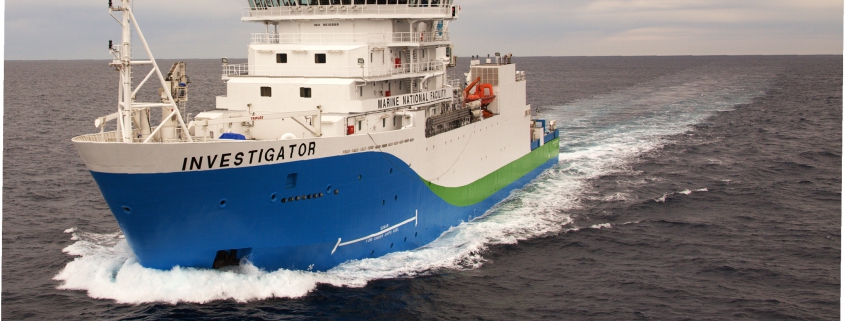Transparent Marine Animals – One Ten East Log
One Ten East Logs from the IIOE-2 voyage aboard RV Investigator will be posted on the WAMSI website during the month long voyage.
Log from One Ten East
The RV Investigator is currently undertaking oceanographic research along the 110°E meridian off Western Australia as part of the second International Indian Ocean Expedition. The voyage is led by Professor Lynnath Beckley of Murdoch University and the research is supported by a grant of sea time on RV Investigator from the CSIRO Marine National Facility.
| Date: May 22, 2019 | Time: 1200 AWST |
| Latitude: 32°S | Longitude: 110°E |
| Wind direction: WSW | Wind speed: 3 knots |
| Swell direction: SW | Depth: 5163 m |
| Air temperature: 17°C | Sea temperature: 19.5°C |
Notes: What a beautiful day! The samples are full of rock lobster larvae (phyllosoma) and two pygmy blue whales are belting out low frequency calls. Are they looking for a dinner date?
Transparent Marine Animals
By Andrew Jeffs
Living in the clear waters of the open ocean is a dangerous business when you are a small swimming organism because there is nowhere to hide from predators. However, many marine creatures have evolved a clever way to overcome the lack of hiding places. They have evolved to make their bodies transparent–so they are almost invisible in the seawater. Having a transparent body can also be handy if you are a predator, as it helps for sneaking up on your prey unseen. Many different types of open ocean organisms have evolved to become transparent including fish, crustaceans, worms, jellyfish and squid. In fact, in some areas of the open ocean, over 90% of the organisms larger than a full stop, are transparent. Despite the prevalence of this phenomenon, it is not well known how these organisms achieve transparency, particularly requiring body tissues that do not absorb or bend light. Whilst on board the RV Investigator in the Indian Ocean we are capturing different types of small transparent ocean organisms in nets and then using laser beams to measure how well their bodies match the optical properties of the surrounding seawater, in order to achieve transparency.
Overall, from the range of nets we are using (and a lot of microscope work), we can quantify zooplankton in the south-east Indian Ocean, process this information in food web analyses and include the data in models of ocean functioning.
Be sure to follow our daily Log from One Ten East at https://iioe-2.incois.gov.in or www.wamsi.org.au.

